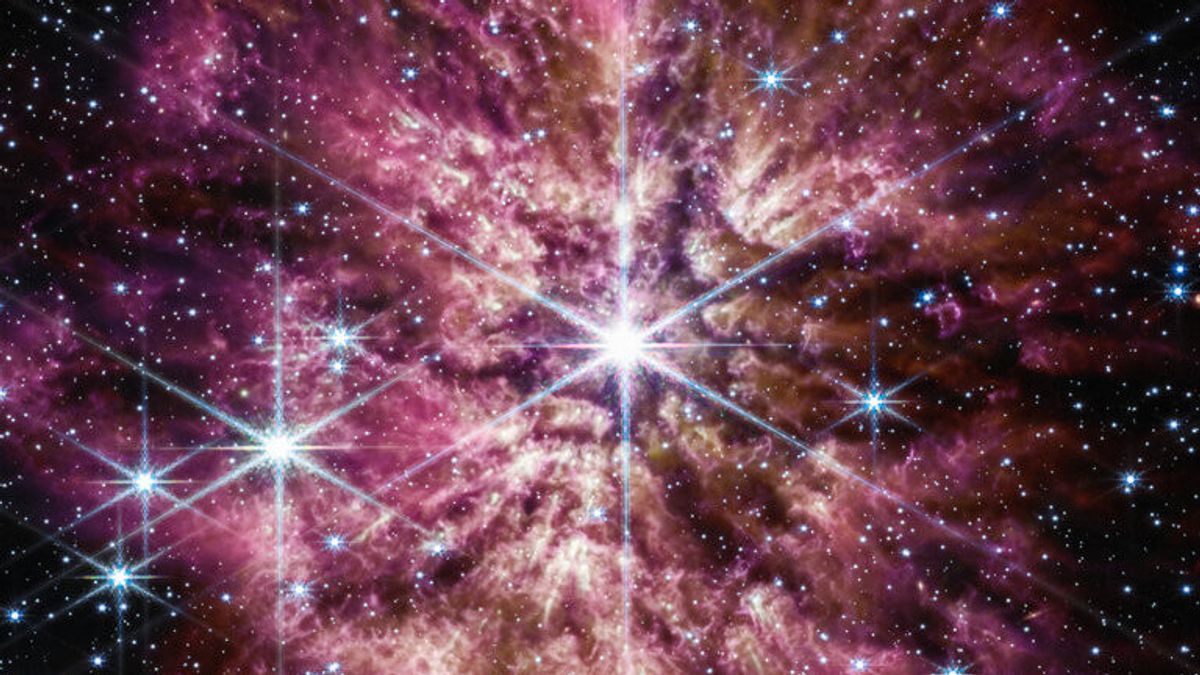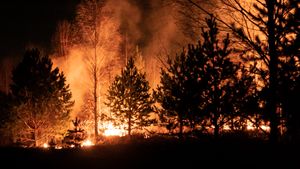JAKARTA - The James Webb Space Telescope has managed to capture a rare and fleeting phase of a star on the verge of death, Wolf-Rayet (WR 124).
WR 124 is a massive star nearing the end of its stellar evolution, and is a rare sight as well as one of the brightest, most massive, and quickly detectable. WR-124 is located about 15,000 light years from Earth in the constellation Sagittarius. One light year is about 5.8 trillion miles.
These observations are among the first made by the Webb Telescope after its launch in late 2021. The Mid-Infrared Instrument (MIRI), which is embedded in the body of the telescope, works to observe all the gas and dust that is thrown into space by a large and hot star.
Gleaming in purple like cherry blossoms, this waste material once formed the outer layers of stars. According to scientists, such a transformation only occurs in a few stars and is usually the last step before they explode, becoming a supernova.
The results of the Webb Telescope's observations are valuable to scientists. These stars are usually in the process of shedding their outer layers, leading to the formation of a characteristic halo of gas and dust around them.
WR 124 is about 30 times the mass of the Sun and has so far shed about 10 solar masses of material. Cosmic dust forms when ejected gas moves away from this star. As the dust cools, it glows in infrared light, which the Webb Telescope can detect very well.
The origin of cosmic dust can survive supernova explosions and contribute to the overall dust budget of the universe.
Dust is an integral part of the workings of the universe, where dust forms stars, planets, including the building blocks of life on Earth, serving as a platform for molecules.
The Webb telescope opens up new possibilities for studying details in cosmic dust, which are best observed in infrared light wavelengths.
The Near-Infrared Camera in the Webb Telescope (NIRCam) balances the brightness of WR 124's star core and the intricate details in the faint surrounding gas. Meanwhile, MIRI revealed the structure of a nebula of gas and dust surrounding the star.
SEE ALSO:
The Hubble Space Telescope photographed a similar transition star decades ago, but it looked like a ball of fire without any fine details.
Before the Webb Telescope was launched, scientists did not have enough detailed information to explore questions about dust production in environments like WR 124.
Stars like WR 124 also serve as analogs to help scientists understand important periods in the early history of the universe, as quoted from the ESA website, Friday, March 17.
For your information, similar dying stars fueled the young universe with heavy elements forged in its core, including on Earth. NASA released this Webb Telescope image at the South by Southwest conference in Austin, Texas.
The English, Chinese, Japanese, Arabic, and French versions are automatically generated by the AI. So there may still be inaccuracies in translating, please always see Indonesian as our main language. (system supported by DigitalSiber.id)
















